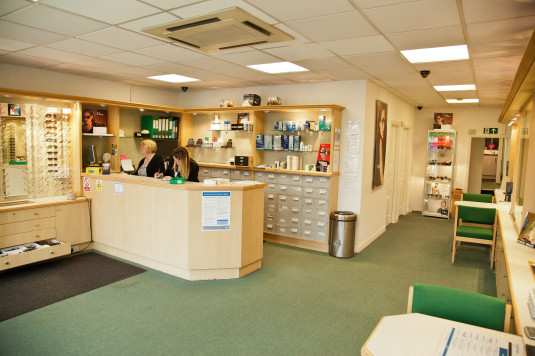 It is vital that you get your eyes examined at least every two years unless a more frequent visit is recommended.
It is vital that you get your eyes examined at least every two years unless a more frequent visit is recommended.
Eye Tests should become part of your overall health care as not only will it indicate the health of your eyes but it also allows us to detect any early stages and symptoms of general health problems such as diabetes and high blood pressure. It will also help us pick up on signs of eye conditions such as glaucoma.
Here at Optisavers we have recently purchased the latest diagnostic equipment including fields screener to check your peripheral vision and also a fundus camera to fully check the retina and the back of the eye. This is a useful tool in our diabetic screening service. As a result of this we are now a fully accredited diabetic practice.
Cataracts
A cataract is a clouding of the lens inside the eye which is responsible for focusing light on the retina. They tend to develop naturally as part of the ageing process, but sometimes are caused by direct trauma or illness.
Diabetes
Diabetes is a condition that can damage blood vessels throughout the body. When this happens on the retina, it is known as diabetic retinopathy and often manifests itself as tiny bleeds. People who are diabetic are advised to have an eye test at least every 12 months and this is provided free of charge on the NHS. During this examination, the health of the retina can be assessed with an ophthalmoscope or an electronic retinal camera. Generally, those who have been diabetic the longest are most likely to develop diabetic retinopathy as are those with poor blood sugar control.
Glaucoma
Glaucoma is a condition usually characterised by a rise in the pressure inside the eye which eventually leads to damage to the optic nerve. Generally, the higher the pressure, the faster the damage will occur. Glaucoma becomes more common with age and those over 40 should have an eye test at least every two years to detect it. If you have a family history of glaucoma and you are over 40, you will be entitled to an NHS eye examination every year. There are three things we can do to help detect it:
- Check the optic nerve for damage with an ophthalmoscope.
- Measure the pressure of the eye with special equipment.
- Check the visual field for a characteristic visual field defect with a dedicated machine.
All the above tests are quick and painless and can be done in any of our practices.
There are two main types of glaucoma:
Open Angle Glaucoma.
This is gradual and painless and is usually caused by raised intra-ocular pressure, but some people with this have normal pressures. This is the most common type of glaucoma, accounting for about 90% of cases in the UK. It can be treated very effectively with special eye drops from an ophthalmologist.
Angle Closure Glaucoma.
This is caused by an acute blockage in the eye’s internal drainage mechanism and can be sudden and extremely painful. The person suffering from this may first notice haloes around lights or foggy vision before an attack. This type of glaucoma is more common in people of Oriental origin or those who are very longsighted. Treatment is usually in the form of a small surgical or laser procedure.
Age Related Macular Degeneration. There are two main types:
“Dry” ARMD: This is the most common type and is caused by an accumulation of metabolic waste in the macula. This is generally gradual and causes a loss of central vision over time. Typically, someone with this condition would increasingly struggle with recognising faces over a distance or reading fine print. This usually affects both eyes though there may be a difference in severity between them.
“Wet” AMRD :This is caused by leaking blood vessels under the macula causing sudden distortion and visual loss. This usually occurs only in one eye; however, there is an increased possibility of the fellow eye developing the condition with time. There are treatments available for this with varying success.
Astigmatism
This is an optical error of the eye that can blur the vision at all distances. This is usually because the cornea is not spherical like the surface of a football, but more like the side of a barrel. This prevents light being focussed onto a single sharp point on the retina. It is corrected by cylindrical lenses.
Myopia
This is also called “short sight” and makes things appear blurred in the distance. It is caused by the eye being too long, or the cornea being too curved causing light to be focussed in front of the retina. It is corrected by “-“ lenses.
Hypermeropia
This is also caused “far sight” and causes blur at all distances. This is usually due to the eye being too short or the cornea being too flat causing light to be focussed behind the retina. It is corrected by “+” lenses.
Presbyopia
As we age naturally, our eyes usually lose the ability to change the natural focus to view things up close. To help correct this, reading glasses, bifocals or varifocals are used.
